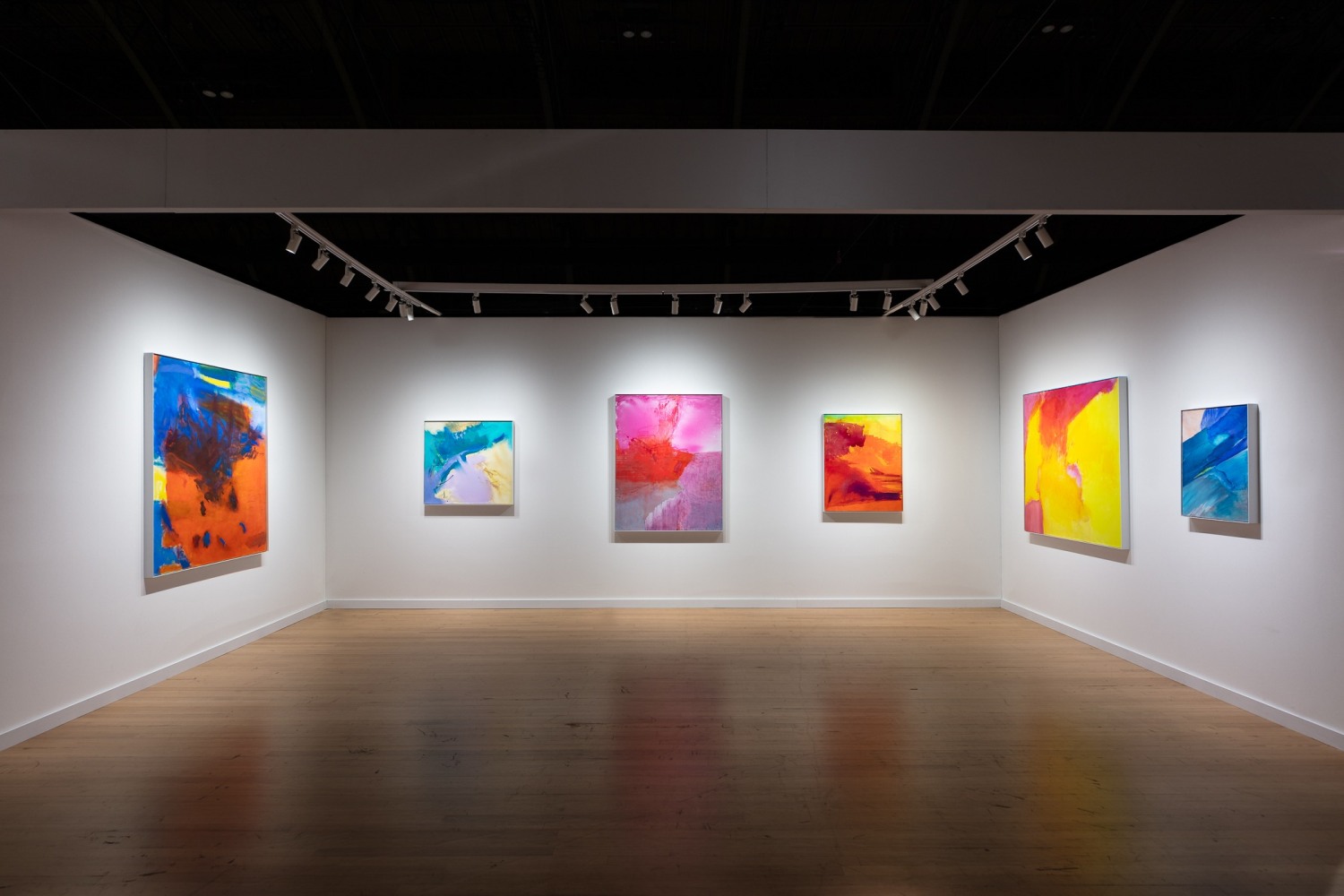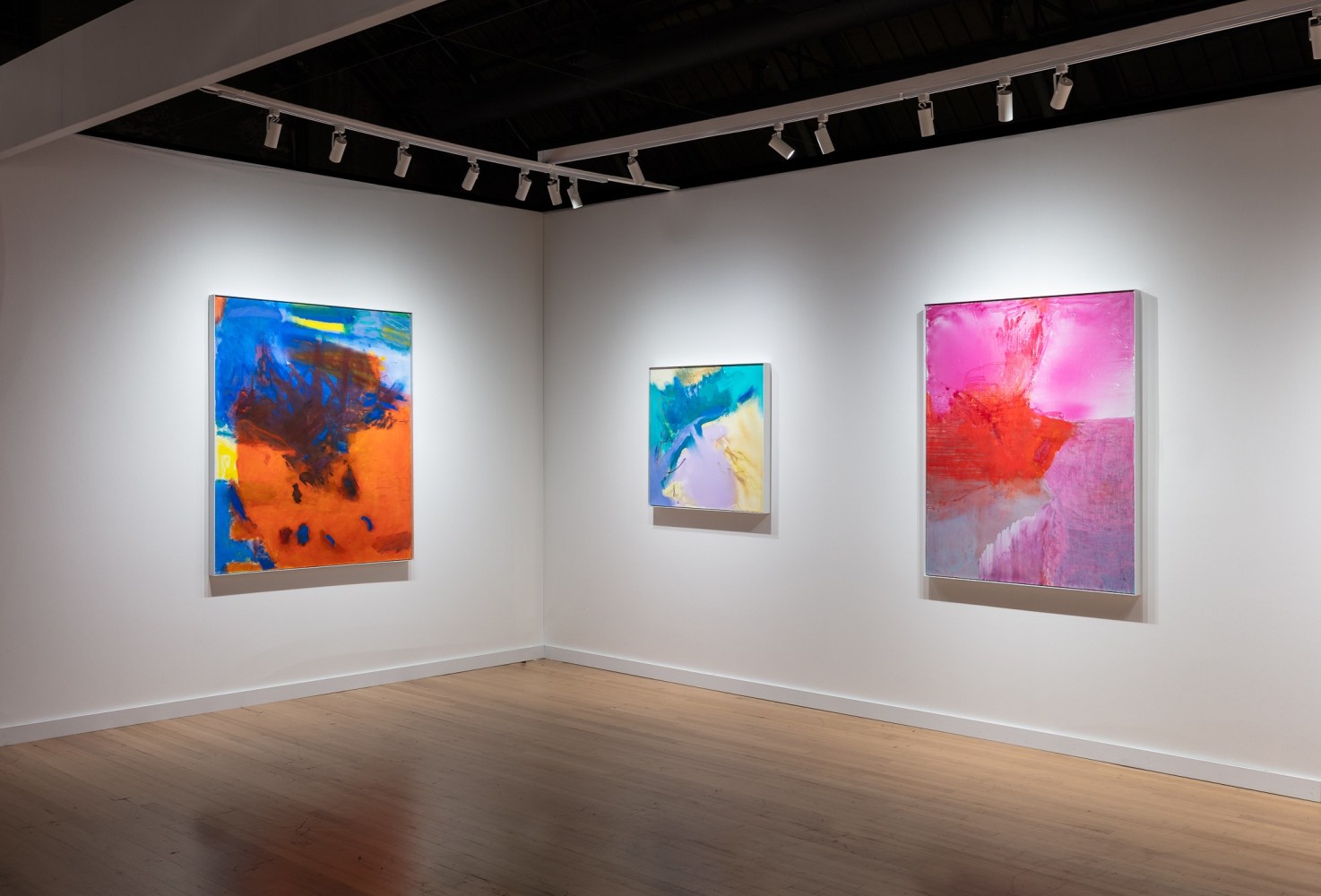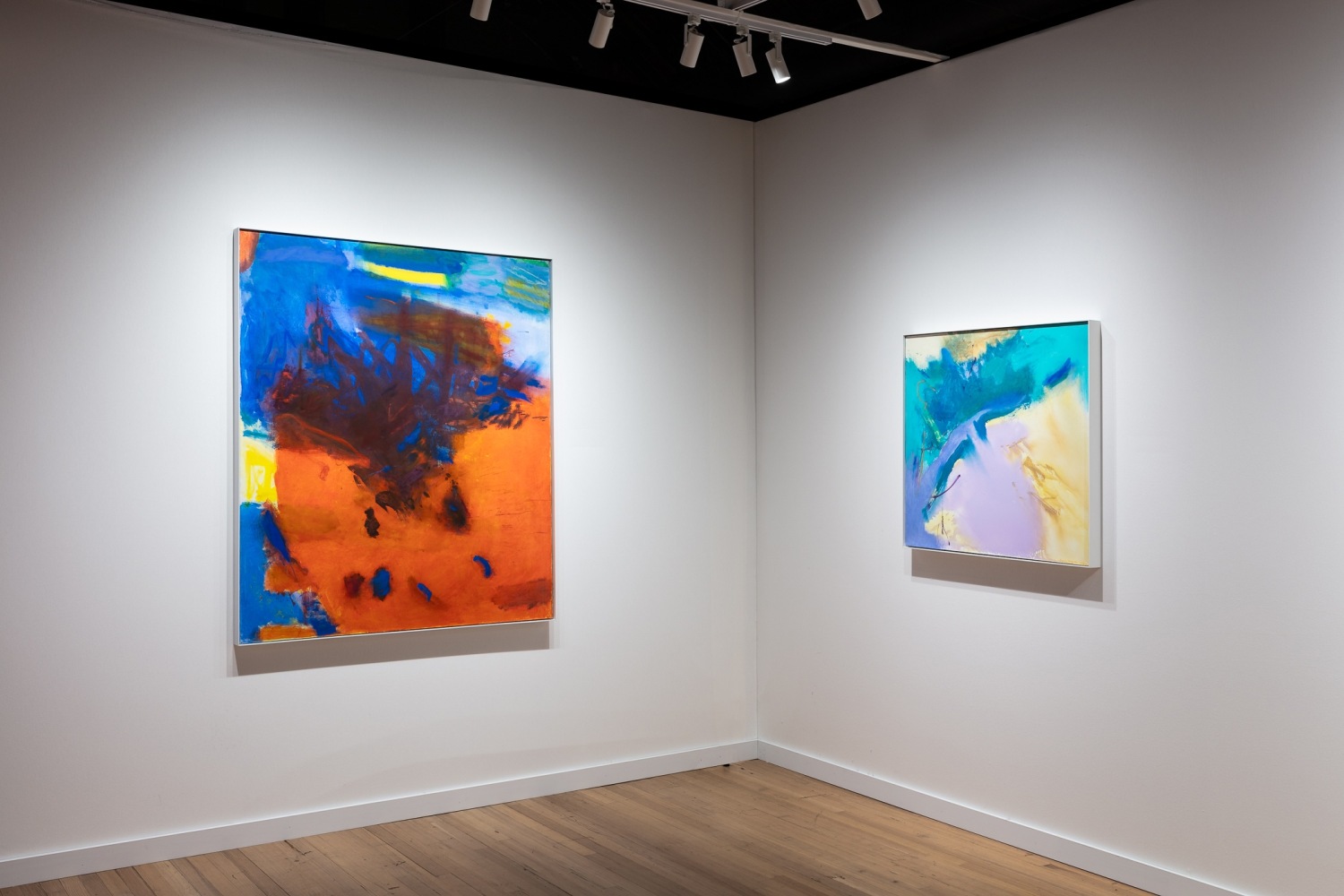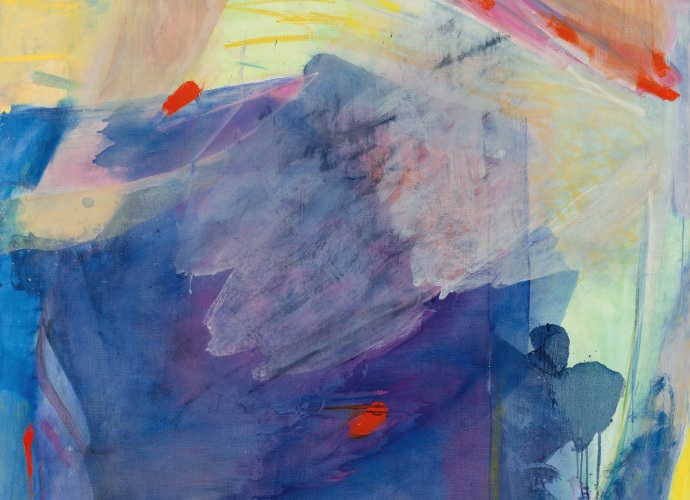
ADAA THE ART SHOW
BOOTH #C9
1 - 5 NOVEMBER 2023
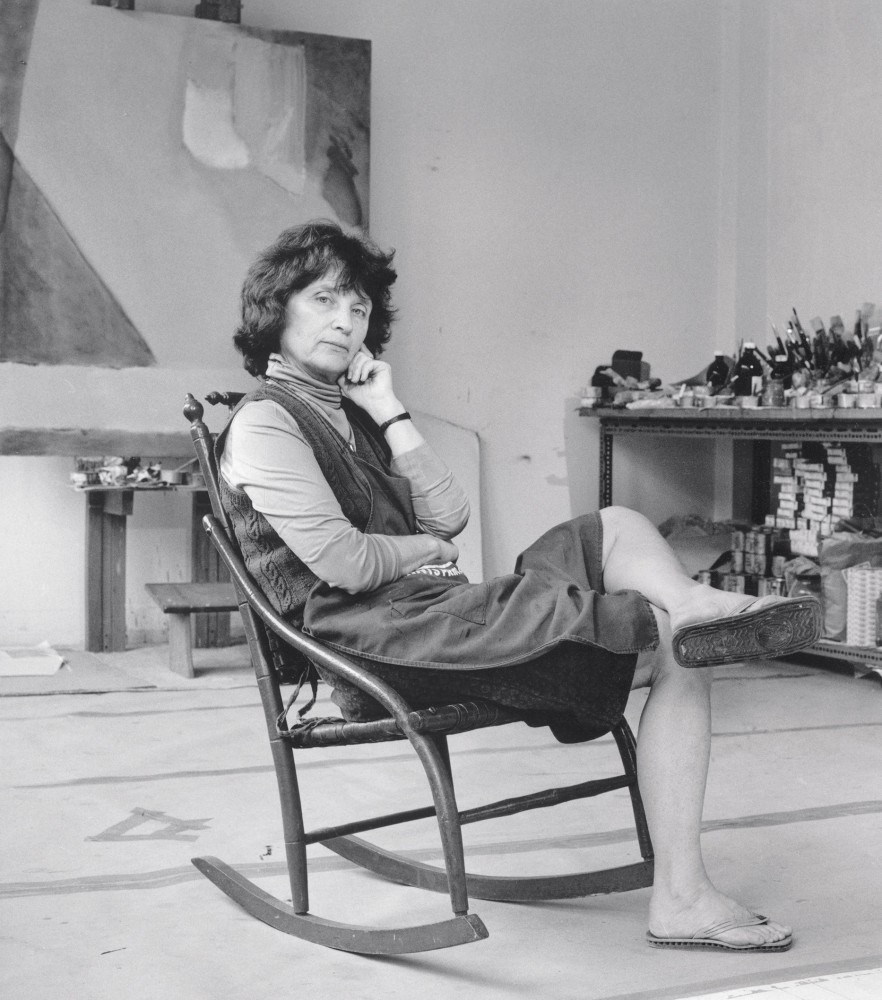
Emily Mason in her New York City studio, 1991.
Photographed by Tommy Naess.
“When I start a picture I like to use the medium as directly as I can . . . [this] puts me in a state of mind which avoids pictorial constraints. I try to use paint for its brilliance, transparency, opacity, liquidity, weight, warmth and coolness. These qualities guide me in a process which will determine the climate of the picture. All the while I work to define spatial relationships, resulting in certain kinds of places. I cannot name them but know intuitively when they appear.”
— EMILY MASON (1932-2019)
Born and raised in New York City, Emily Mason’s art education began in the studio with her mother Alice Trumbull Mason, a founding member of the American Abstract Artists. A graduate of New York City’s High School of Music and Art, she attended Bennington College and The Cooper Union. In 1956, she was awarded a two-year Fulbright Grant to paint in Venice, Italy. There, she studied at the Accademia delle Belle Arti where she first experimented with blotting and transferring paint onto the surface of the canvas. In 1957, at the Ponte de Rialto, Mason married painter Wolf Kahn (1927-2020), with whom she had two daughters.
Since she emerged on the Tenth Street gallery scene in 1960 with Area Gallery, Mason has exhibited regularly in New York City. In 1979 she was awarded the Ranger Fund Purchase Prize by the National Academy of Design. For over 30 years, Mason taught painting at Hunter College. Her work is included in numerous public and private collections.
In 2006, George Braziller published Emily Mason: The Fifth Element, a comprehensive treatment of her work by David Ebony and Robert Berlind. In 2015, University Press of New England released her second monograph, Emily Mason: The Light in Spring, featuring prints and paintings since 2005, edited by Ani Boyajian with text by David Ebony and Christina Weyl.
Mason passed away on 10 December 2019, the birthdate of her namesake, Emily Dickinson.
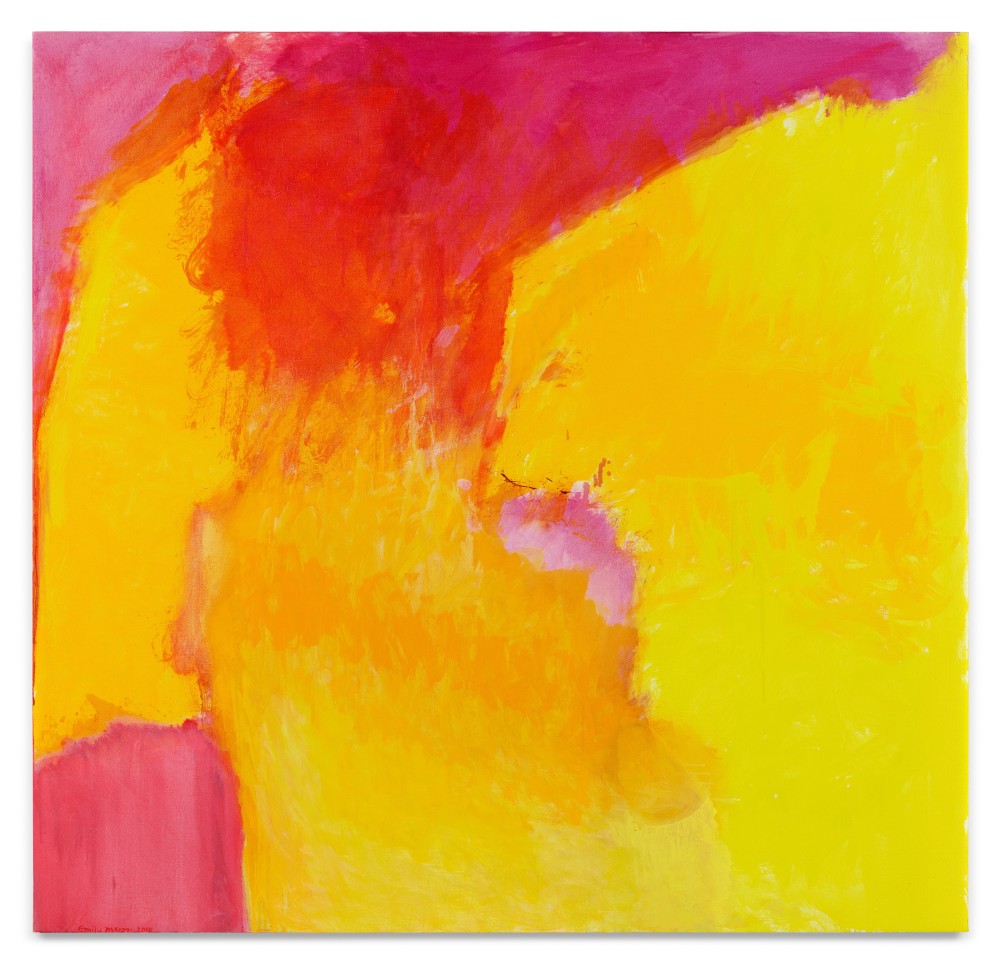
Arch, 2018, Oil on canvas, 52 x 54 inches, 132.1 x 137.2 cm, MMG#30529
Park Avenue Armory
67th Street and Park Avenue
New York, NY 10065
Benefit Preview
Wednesday, 1 November
Run of Show
Thursday, 2 November: 12pm – 7pm
Friday, 3 November: 12pm – 7pm
Saturday, 4 November: 12pm – 7pm
Sunday, 5 November: 12pm – 5pm
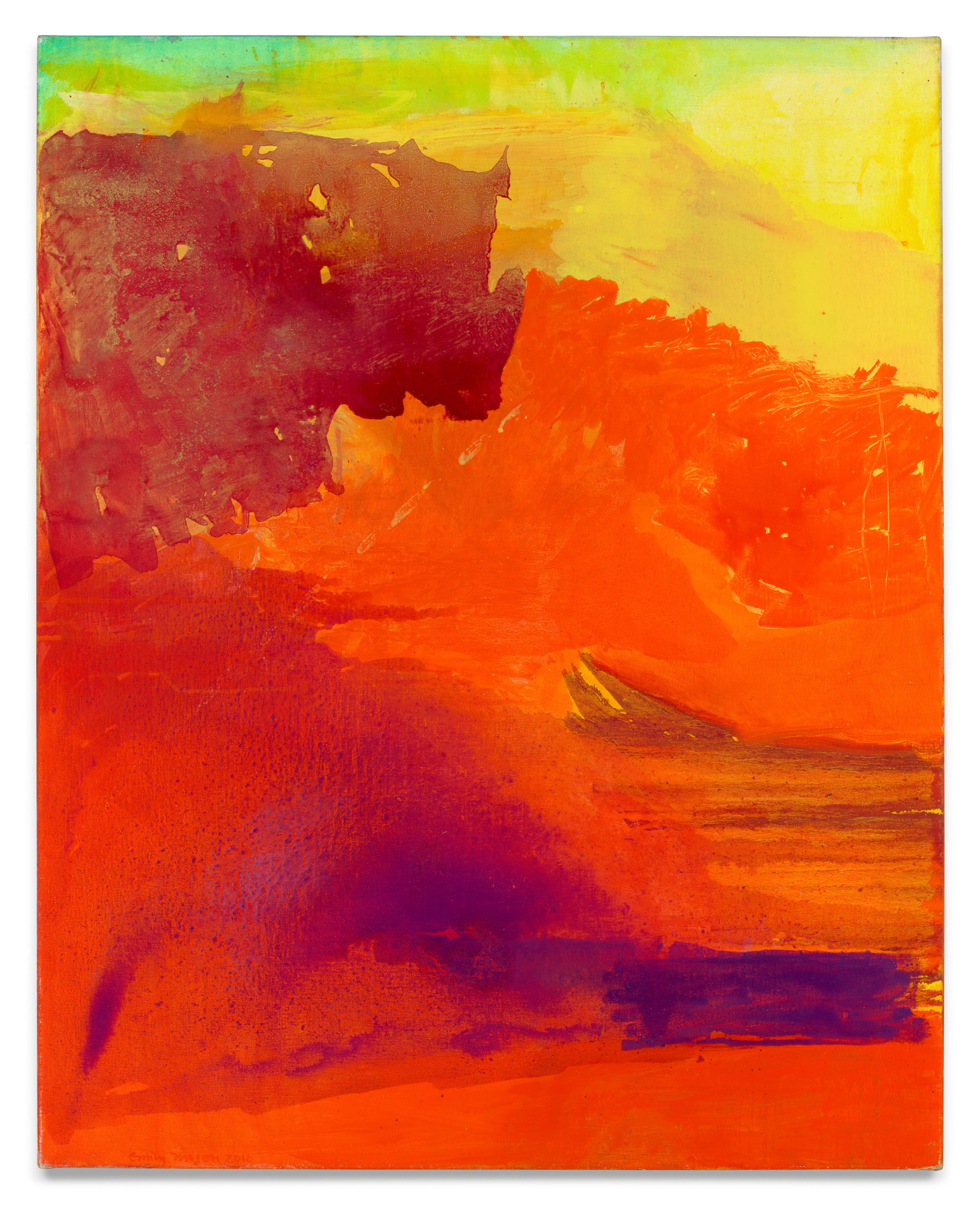
Incoming, 2016, Oil on canvas, 40 x 32 inches, 101.6 x 81.3 cm, MMG#35659
Emily Mason: The Alchemy of Paint and the Art of Letting Go.
I have in mind this image of Emily Mason in the bright daylight of her Chelsea studio: the painter looking at her vibrant palette of colors poured into tiny cat food containers. She is getting ready. She will work with or without brushes, canvas on the floor, on the wall or held by a corner. There is no one way. Everything is possible.
For Mason, painting was an exploration of the alchemy of paint and the art of letting go. Sometime in the late 1960s, she began eliminating the superfluous to free her paint from any burdens. This was a lifelong quest; it came to define her art. Her powerful, lyrical abstractions were the results of minimal gestures. At times, Mason barely seemed to touch the canvas. Pigments and oil float, veil, stir, and move across the pictorial space without resistance. In her best pieces, nothing came between Mason and her canvas. The whole process looks like a natural phenomenon, activated by forces that are beyond the artist. This is what Taoists would call being in flow with the universe. Mason would say: “I feel as if I’m a conduit, but of what I don’t know until the paintings are finished.”[1]
[1] Lona Foote interview with Emily Mason, May 27, 1975.
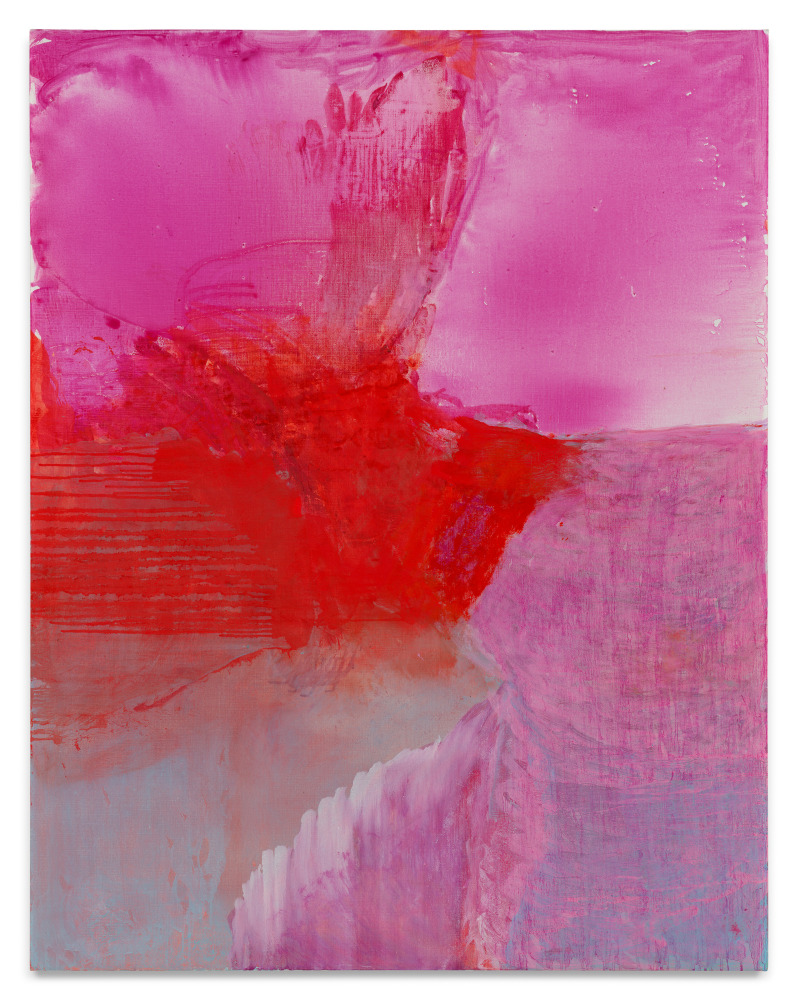
Latitude Unknown, 2014, Oil on canvas, 56 x 44 inches, 142.2 x 111.8 cm, MMG#35658
Mason spent a lifetime getting to know her material intimately. Her expertise was that of a master. She combined that mastery with an openness to welcome chance encounters. She was technical and receptive. Always modest, Mason considered painting an art of dialog with the material and not a control of it. When speaking of her creative process, she often quoted John Cage’s famous line: “Getting your mind out of the way.”[1] While Mason didn’t have a hard conceptual stance like Cage’s, her outlook on art recalls one of the main Taoist principles: that learning can be attained by unlearning. Rather than entering the painting process with preconceived ideas, Mason opened herself to the unknown. She would say: “I like to feel that I work on a painting until something magical happens. Until it becomes something outside of myself, a new vision. […] You lose a kind of control, but you gain something else.”[2]
[1] John Warren Oakes interview with Emily Mason, 2005, transcript, 7.
[2] Lona Foote interview with Emily Mason, May 27, 1975.
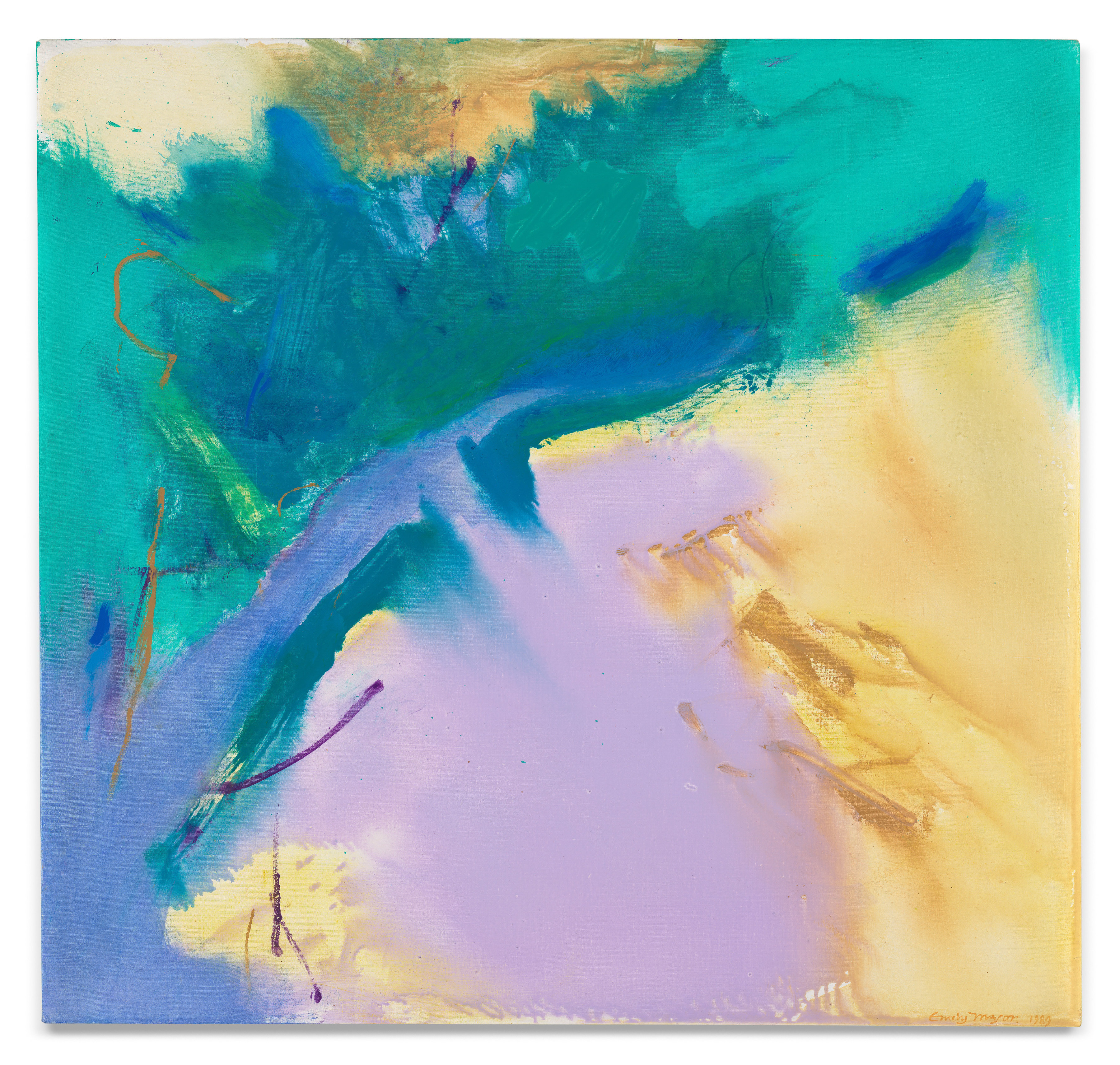
Migration, 1989, Oil on canvas, 34 x 36 inches, 86.4 x 91.4 cm, MMG#36021
To achieve suppleness, flow and unhesitant mark making the artist fostered a calm and centered studio atmosphere. She had a regular meditation, yoga and calligraphy practice. The latter’s demanding principles of directness and flawlessness were something she understood from her experience of oil paint. Mason’s wisdom was that she intuitively knew she was at her best when she stepped back and welcomed the flow. The results are contemplative works of rare beauty. Their power resides in Mason’s strength, one that came from her deep knowledge of paint and bold readiness to forget what she had learned. Her approach often reminds me of Lao Tzu’s words:
“In the pursuit of knowledge,
every day something is added.
In the pursuit of the Tao,
every day something is dropped.
Less and less do you need to force things,
until finally you arrive at non-action.
When nothing is done,
nothing is left undone.
True mastery can be gained
by letting things go their own way.
It can’t be gained by interfering.”[1]
[1] Lao Tzu, “Unlearning,” Tao Te Ching, trans. Stephen Mitchell, (New York: Three Rivers Press, 2000), Chapter 48.
Dr. Barbara Stehle Los Angeles, October 13th, 2023.

Off Guard, 2017, Oil on canvas, 28 x 20 inches, 71.1 x 50.8 cm, MMG#36022
"...her paintings also capture the discernment of a confident eye. Mason's process was not a fast, lose-yourself-in-the-moment kind of painting, but one in which she constantly stood back from the work to see what it was doing, to make decisions about how it should be pushed further and, ultimately, how it should be oriented."
– Andrea Gyorody in "Landscapes, Seascapes, Fire Escapes"
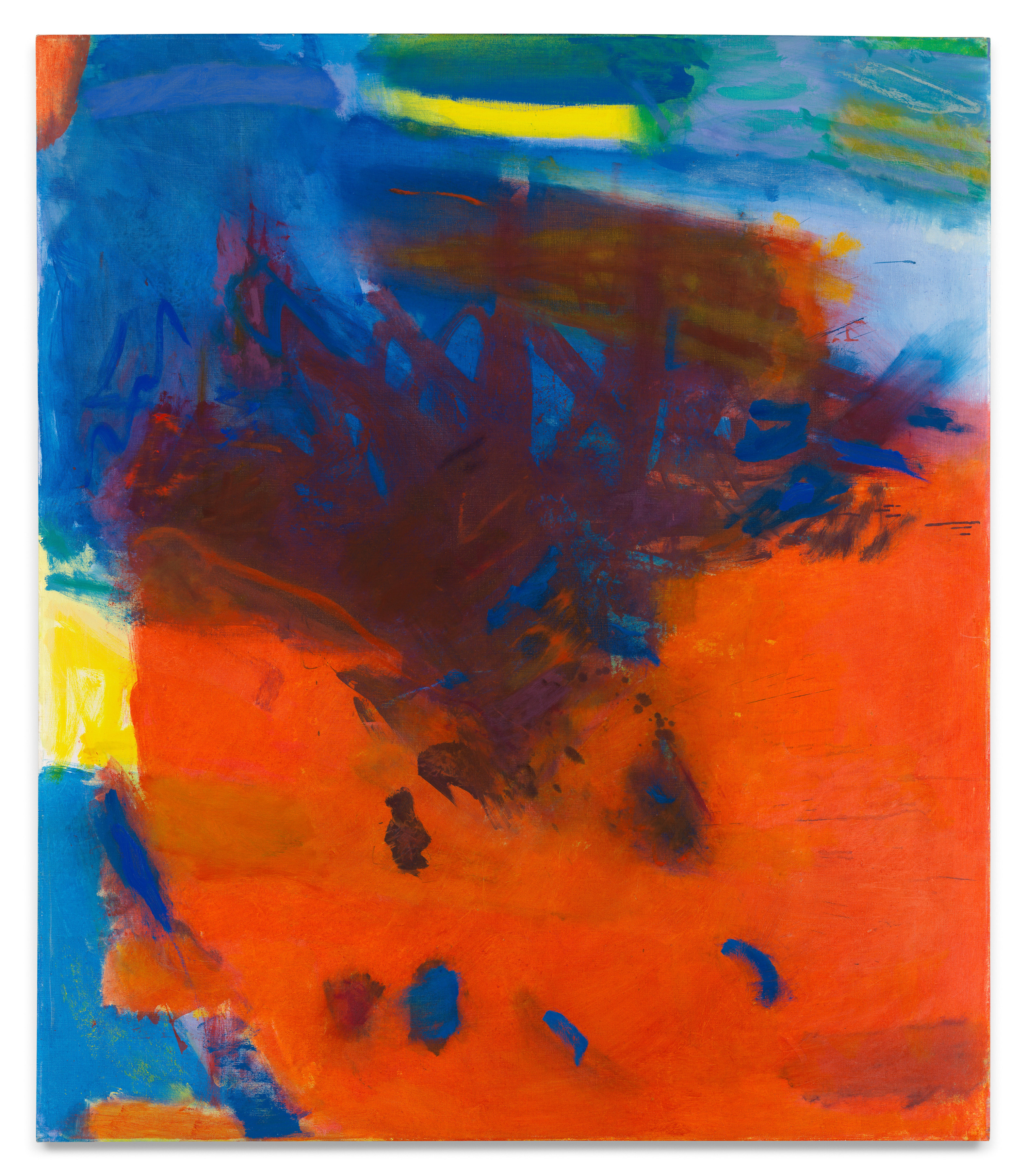
Sundown Crept, 1987, Oil on canvas, 60 3/8 x 52 1/8 inches,
153.4 x 132.4 cm, MMG#36152
